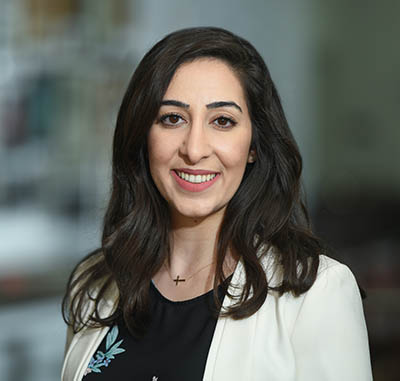We recently sat down with Dr. Christina Abuata, a PROSE Provider at Baylor College of Medicine, to learn about her experience using PROSE treatment and scleral lenses, and how she chooses between these modalities when working with patients. Prefer video? You can watch Dr. Abuata answer our questions here.

Why did you choose a career in specialty contact lenses?
What drove me to fit specialty contact lenses was an externship that I did in optometry school. I was with a really great mentor who taught me the foundations of fitting scleral lenses, and during those appointments with the patients, patients always would say ‘you really need to do this, we never got the care that we needed and that we wanted, and we need more doctors like you’. And I was still a student at the time so I thought that maybe pursuing a residency or a fellowship and creating a stronger foundation would lead me to that path, and that’s why I wanted to fit specialty contact lenses
PROSE vs scleral, what’s the difference?
I fit both PROSE and scleral lenses, and the main difference that I take into consideration when I’m doing a consult with patients is their underlying condition. If it is a chronic progressive condition or somebody that I feel needs more time to fit, a little bit more hand-holding in the beginning, and maybe more customization, that’s where I draw the line and I say that they’re a PROSE candidate.
If I have a patient who has a milder condition, maybe just a normal-shaped eye, maybe some dryness, and needs a little bit more comfort where we can get away with a scleral lens, I think that that’s a great option for them. What I typically do is start the fitting with a scleral lens, see how they do, and if we’re having any reservations or any issues with the scleral lens then that would lead me to switch them to a PROSE design. A little bit more customized where we get a little bit more time as well to fit them.
What is PROSE used for?
PROSE treatment is very beneficial for patients with keratoconus, corneal transplants, dry eyes from Sjogren’s Syndrome or Graft vs. Host Disease, patients who have Stevens-Johnson Syndrome, or even corneal scarring. We can also use a PROSE device as a crutch for patients that have an eyelid droop from nerve damage and muscle weakness; we can actually prop up the eyelid to open the eyelid for them.
What did your patients try prior to coming to you for treatment?
Most of my patients who come to see me have tried almost everything. They’ve exhausted all options. Usually, with our dry eye patients, we start them with drops, gels, maybe some prescribed eye drops, steroids, bandage contact lenses, punctal plugs… and there are some cases where they’ve tried a scleral lens and were still having issues with comfort or vision. That’s truly a daily thing that I see. We have a long list of previous therapies but once we get them into a PROSE device, slowly but surely we start knocking little bit off of their therapies. We’ve had patients cry in the chair because they were never able to see that well. Those patients really struck me and made me realize I want to become better, and I want to help more patients who have different sorts of conditions.
What do you look forward to achieving as a PROSE Provider?
As a PROSE Provider, I hope to continue to change lives. I feel like I’ve already made a really big impact on patients who have exhausted all options. And I hope to raise awareness about PROSE and spread the word to make sure that more and more people are aware that we can help them.